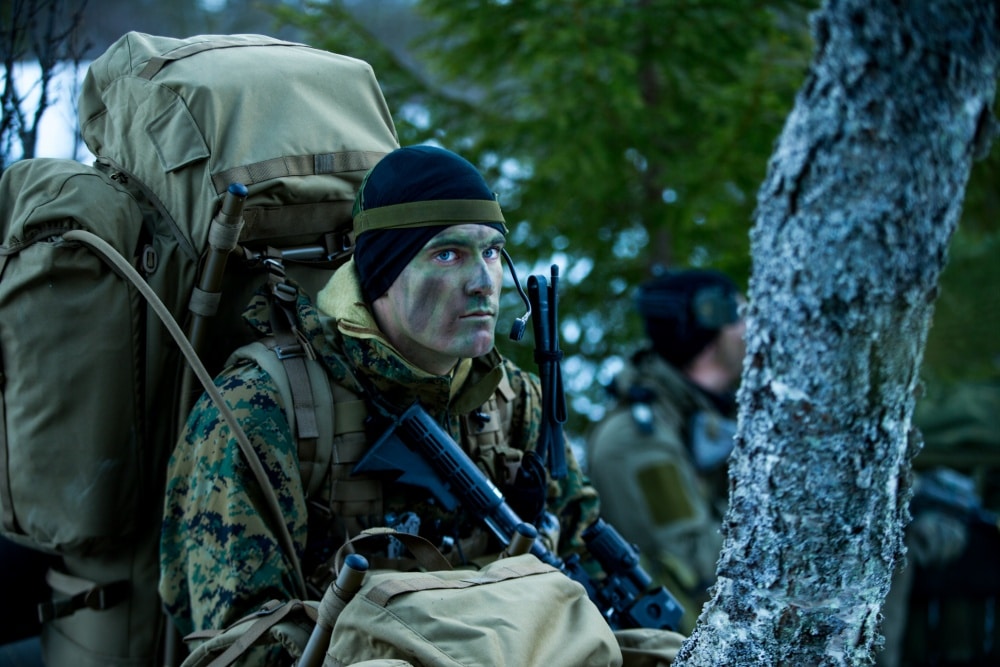Arctic warfare & Marines: A special relationship
- By Stavros Atlamazoglou
Share This Article

As the Pentagon is preparing for a conflict with China or Russia, units are spending more time honing their arctic warfare skills.
As part of this revitalized focus on arctic warfare, 300 US Marines assigned to the Marine Rotational Force-Europe (MRF-E) just completed an arctic warfare rotation in Norway.
The rotation ended with Exercise Reindeer II. During the appropriately-named event (because of the approaching holiday season), the American Marines and their Norwegian allies from Brigade North trained in arctic survival and arctic operations, such as movement on skis, marksmanship in arctic conditions, and patrolling.
Marines from the 3rd Battalion, 6th Marine Regiment formed the core of the MRF-E.

“We have learned a lot from our time here in northern Norway,” said Lieutenant Colonel Ryan Gordinier, the commanding officer of the MRF-E contingent, in a press release. “For the Marines and Sailors, they have learned how to survive, thrive, and fight in the beginning of the arctic winter. For the staff and the commanders, we have learned what it takes to truly integrate with Brigade North through all warfighting functions.”
Until very recently, US troops would conduct six-month arctic warfare rotations in Norway. But now that has changed with shorter but more intense deployments. The latest MRF-E rotation was six weeks long.
The aim behind the rotation of US troops in Scandinavia is to strengthen the operational readiness, interoperability, and security cooperation of the US and its local allies and partners.
The Marines will be back soon, though. In January 2021, the same unit will return to Norway for a follow-on rotation but this time with more troops (1,000).
“As the polar night becomes the norm, we look forward to continuing our steps in more intertwined interoperability with Brigade North and the Norwegian Army,” added Lt. Col. Gordinier. “The ‘Teufelhunden Battalion’ is honored to be a part of the lineage of Marine Rotational Force-Europe deployments. We know that the rest of the arctic winter is coming and we looking forward to our continued pursuit of excellence to make our NATO alliance stronger.”
The Marine Corps has a history of presence in Norway. For the last few years, in addition to the rotations of conventional Marines, Reconnaissance Marines have been training alongside Norwegian special operations units, sometimes even for months.
During one of those rotations, Sergeant Joseph Ortiz, a team leader in the 1st Recon Battalion, had identified an important aspect of such combined exercises.
He had said that “the way the Norwegian Coastal Ranger Commandos (KJK) are with each other, just on a personal level and the way they conduct business, I honestly felt like I came to another reconnaissance battalion when I came here.”
The Norwegian military’s Long Range Reconnaissance Patrol (LRRP) course that focuses on patrolling in arctic warfare environments is very popular with US and allied special operations units.
But American Marines aren’t the only ones who go to Norway to hone their arctic warfare skills. The British Royal Marine Commandos are frequent visitors of the northern European country.
The reason behind Norway’s popularity with arctic warfare enthusiasts is the country’s environment. From littoral waters to open sea to mountains to forests, Norway has almost everything. Its proximity to Russia, moreover, makes it that much more important in case there is a conflict.
Related Posts
Sandboxx News Merch
-

‘AirPower’ Classic Hoodie
$46.00 – $48.00 Select options This product has multiple variants. The options may be chosen on the product page -

‘Sandboxx News’ Trucker Cap
$27.00 Select options This product has multiple variants. The options may be chosen on the product page -

‘Kinetic Diplomacy’ Bumper Sticker (Black)
$8.00 Add to cart
Stavros Atlamazoglou
Greek Army veteran (National service with 575th Marines Battalion and Army HQ). Johns Hopkins University. You will usually find him on the top of a mountain admiring the view and wondering how he got there.
Related to: Breaking News

Could France undertake the role of Europe’s nuclear protector? Potentially

What are the differences between the six generations of fighter aircraft?
Sandboxx News
-

‘Sandboxx News’ Trucker Cap
$27.00 Select options This product has multiple variants. The options may be chosen on the product page -

‘AirPower’ Classic Hoodie
$46.00 – $48.00 Select options This product has multiple variants. The options may be chosen on the product page -

‘AirPower’ Golf Rope Hat
$31.00 Select options This product has multiple variants. The options may be chosen on the product page -

‘Sandboxx News’ Dad Hat
$27.00 Select options This product has multiple variants. The options may be chosen on the product page
